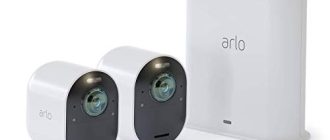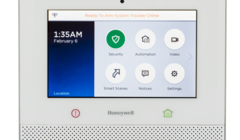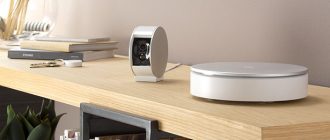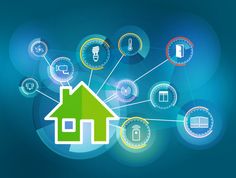
How smart home technology is changing the landscape of home security
In today’s rapidly evolving technological landscape, our homes have become more connected than ever before. One area where this connectivity is particularly evident is in home security. Traditionally, home security relied on simple measures such as locks and alarm systems. However, recent advances in smart home technology have revolutionized the way we protect our homes.
Smart home technology harnesses the power of the internet and automation to create a safer and more secure environment. The integration of various devices, such as motion sensors, cameras, and door locks, allows homeowners to monitor and control their homes remotely. With just a few taps on a smartphone app, you can check the status of your security system, receive instant notifications of any suspicious activity, and even lock or unlock your doors from anywhere in the world.
This innovative technology not only enhances the convenience of home security, but it also provides a greater level of protection. Smart home security systems are equipped with advanced features such as facial recognition, voice control, and artificial intelligence. These capabilities enable the system to distinguish between false alarms and actual threats, reducing the risk of false notifications and ensuring a higher level of accuracy.
With smart home technology, homeowners have the ability to customize their security settings to suit their individual needs. Whether you’re at home, at work, or on vacation, you can create personalized rules and schedules for your security system. For example, you can set up geofencing to automatically arm the system when you leave the house and disarm it when you return. This level of customization ensures that your home security is tailored to your specific lifestyle and preferences.
Traditional Home Security Systems
Traditional home security systems have long been the go-to option for protecting homes from intruders. These systems typically consisted of door and window sensors, motion detectors, and an alarm system that would be triggered if any of these sensors were breached.
While these systems were effective in their time, technology has dramatically changed the way we think about home security. With the advent of smart home technology, traditional security systems are being replaced with more advanced and comprehensive options.
Traditional home security systems relied on wired connections and were often difficult to install and maintain. They were limited in their capabilities and could only provide basic security measures. In contrast, smart home security systems utilize wireless technology and can be easily installed and integrated with other smart devices in the home.
Smart home security systems also offer a wide range of features that go beyond the basic sensors and alarms. They can include video surveillance cameras, smart locks, and even facial recognition technology. These advanced features provide homeowners with a higher level of security and control over their home.
Another advantage of smart home security systems is their ability to be monitored remotely. Homeowners can receive real-time alerts and access their security system from anywhere using their smartphone or other connected devices. This allows them to keep an eye on their home and take immediate action if an alarm is triggered.
In conclusion, traditional home security systems are being replaced by smart home technology. The convenience, flexibility, and advanced features of smart home security systems are revolutionizing the way we think about home security. With the advancements in technology, homeowners can now enjoy a higher level of security and peace of mind.
Advantages of Smart Home Technology
Smart home technology offers a range of advantages when it comes to home security. With the changing landscape of security concerns, traditional methods are no longer sufficient in protecting homes. However, smart home technology provides new and innovative solutions that help keep homes safe and secure.
One of the key advantages of smart home technology is the ability to remotely monitor and control your home’s security systems. With smart security cameras, door locks, and motion sensors, homeowners can easily check in on their homes, receive real-time alerts, and even control access to their property from anywhere in the world using a smartphone or tablet.
Another advantage is the integration of smart home security systems with other smart devices in the home. By connecting security systems with other devices like smart thermostats, lighting, and doorbell cameras, homeowners can create an interconnected ecosystem that enhances both security and convenience. For example, when a security camera detects motion, it can automatically turn on the lights or adjust the thermostat settings to create the illusion of someone being home, deterring potential burglars.
In addition, smart home technology offers advanced security features that traditional systems may lack. For instance, facial recognition technology can identify known individuals and send alerts when an unfamiliar face is detected. This can help identify and prevent potential threats, such as unauthorized individuals gaining access to the home or package theft.
Lastly, smart home technology provides peace of mind to homeowners. The ability to remotely monitor and control security systems, coupled with advanced features like real-time alerts and video surveillance, allows homeowners to feel secure even when they are away from home. This can greatly reduce feelings of stress and worry about the safety of their property.
In conclusion, smart home technology brings several advantages to home security. By utilizing smart devices and systems, homeowners can enhance the security of their homes, stay connected and in control at all times, and enjoy greater peace of mind in an increasingly digital world.
Enhanced Security Features
In the changing landscape of home security, technology has played a crucial role in revolutionizing the way we protect our homes. With the advent of smart home technology, traditional security systems have been enhanced with innovative features that offer a higher level of protection.
One of the key aspects of this new smart home security technology is the ability to remotely monitor and control the security system from anywhere in the world. This feature provides homeowners with the peace of mind of being able to check on their property at any time, whether they are at work or on vacation.
Smart security systems also incorporate advanced sensors and cameras that can detect and analyze any unusual activity in and around the home. These sensors can detect motion, sound, heat, and even changes in air quality, alerting homeowners to potential threats. In addition, the cameras can provide high-resolution video footage that can be accessed and reviewed remotely.
Another innovative feature of smart home security technology is the integration with other smart devices in the home. For example, smart door locks can be connected to the security system, allowing homeowners to remotely lock and unlock their doors. This not only provides convenience but also enhances security by ensuring that only authorized individuals can enter the home.
In conclusion, smart home technology has greatly changed the home security landscape by offering enhanced security features. With the ability to remotely monitor and control the security system, advanced sensors and video cameras, and integration with other smart devices, homeowners now have access to a higher level of protection and peace of mind.
Convenience and Control
The advent of smart home technology has brought unprecedented convenience and control to the field of home security. Traditional home security systems often required manual operation, with homeowners having to arm and disarm their alarms, lock doors, and adjust thermostats manually. With the introduction of smart home technology, however, these tasks become automated and controllable from anywhere using a smartphone or other connected device.
Smart home security systems can be programmed to detect when a homeowner is away and automatically arm themselves, ensuring that the home is always protected. Similarly, they can be set to disarm when the homeowner returns, providing a seamless and convenient experience. This level of control and automation takes away the need for homeowners to worry about forgetting to set their alarms or wondering if they remembered to lock the front door.
In addition to convenience, smart home security systems offer a heightened level of control. Homeowners can monitor their homes in real-time through connected cameras and receive alerts on their devices if any suspicious activity is detected. This allows for immediate action to be taken, whether it’s contacting the authorities or simply checking in on a pet during the day.
The changing landscape of home security has also seen the integration of smart devices within the home. From smart door locks that can be unlocked with a smartphone to thermostats that can be adjusted remotely, these innovations enhance the overall security and convenience of the home. For example, homeowners can remotely lock or unlock their doors for trusted visitors, such as family members or service providers, ensuring secure access even when they are not at home.
In conclusion, smart home technology has revolutionized home security by providing convenience and control to homeowners. With automation and remote access, homeowners can have peace of mind knowing that their homes are secure, even when they are away. The integration of smart devices within the home further enhances the overall security and convenience, making the transition from traditional to innovative home security an essential component in the modern landscape.
Integration with Other Smart Devices
The technology behind smart home security is constantly evolving, and one of the key features that sets it apart from traditional security systems is its ability to integrate with other smart devices in the home. This integration allows for a seamless and interconnected experience, making it easier than ever to monitor and control your home security.
With the changing landscape of home security, it is no longer sufficient to rely solely on traditional locks and alarms. The integration of smart devices, such as smart door locks, motion sensors, and security cameras, allows for a comprehensive and personalized approach to home security.
Smart door locks can be connected to your home security system, giving you the ability to lock and unlock your doors remotely. This provides added convenience and peace of mind, as you can easily grant access to trusted individuals or monitor who is entering and exiting your home.
Motion sensors can also be integrated with your smart home security system, alerting you to any movement or activity in and around your home. This helps to deter potential intruders and provides you with real-time notifications of any suspicious activity.
Security cameras have also seen significant advancements with the rise of smart home technology. These cameras can be connected to your home security system, allowing you to monitor live video feeds from your smartphone or computer. With features such as night vision and two-way audio, you can easily keep an eye on your home and communicate with anyone on your property.
In addition to these devices, smart home security systems can also integrate with other smart devices in your home, such as smart thermostats, lighting systems, and even voice assistants. This allows for a truly connected and automated experience, where your home security can work in tandem with other smart devices to create a more efficient and secure living environment.
Overall, the integration of smart devices with home security technology is revolutionizing the way we approach and experience home security. With the ability to seamlessly connect and control various devices, homeowners now have the power to create a personalized and responsive security system that meets their unique needs.
Remote Monitoring and Notifications
One of the key advantages of smart home technology in revolutionizing home security is remote monitoring and notifications. With traditional security systems, homeowners had to rely on physical locks and alarms to protect their homes. However, with smart technology, homeowners can access their security system remotely through their smartphones or other devices.
This remote monitoring capability allows homeowners to keep an eye on their homes from anywhere in the world. Whether they are at work, on vacation, or simply running errands, homeowners can check in on their home’s security status through a mobile app or a web portal. This feature gives homeowners peace of mind knowing that they can monitor their home and react quickly to any potential security threats.
In addition to remote monitoring, smart home technology also provides notifications to homeowners. With traditional security systems, homeowners would only be alerted to a break-in or a security breach when they were physically present in the home. However, with smart technology, homeowners can receive instant notifications on their smartphones or other devices.
These notifications can range from alerts about doors or windows being opened or breached, to notifications about suspicious activity or even potential fires or floods. By receiving these notifications in real-time, homeowners can take immediate action to ensure the safety of their home and their loved ones.
In conclusion, with smart home technology, remote monitoring and notifications have revolutionized home security. Homeowners now have the ability to monitor their homes from anywhere in the world and receive instant notifications about potential security threats. This level of control and awareness is changing the landscape of home security, making homes safer and giving homeowners peace of mind.
Energy Efficiency
One of the key benefits of smart home technology is its focus on energy efficiency. As the security technology landscape continues to evolve and change, smart home systems are becoming increasingly more energy efficient.
Traditional home security systems often rely on constant power sources, such as wired electricity, to operate. However, smart home security systems utilize wireless technology and energy-saving features to reduce energy consumption.
By using motion sensor technology, smart home security systems can detect when occupants are present in a room and adjust lighting and temperature accordingly. This not only reduces energy usage when the home is unoccupied, but also provides a more comfortable living environment when occupants are present.
Another way that smart home technology promotes energy efficiency is through the use of smart thermostats. These devices learn the occupant’s behavior and adjust temperature settings based on their preferences and patterns. By regulating heating and cooling in this way, energy waste is minimized, resulting in lower energy bills and a reduced carbon footprint.
Furthermore, smart home security systems often offer the ability to remotely control and monitor energy consumption. This allows homeowners to easily turn off lights, adjust thermostat settings, and manage energy usage even when they’re not at home.
In conclusion, smart home technology has greatly improved energy efficiency in the home security industry. By utilizing wireless technology, motion sensors, smart thermostats, and remote control features, homeowners can reduce energy waste, lower their energy bills, and contribute to a more sustainable environment.
Cost Savings
Smart home technology is not only revolutionizing home security, but also providing significant cost savings for homeowners. By incorporating smart security systems into their homes, homeowners can benefit from various cost-effective features.
One of the significant cost savings comes from energy management. Smart home security systems can monitor energy usage in real-time and provide homeowners with insights on how to optimize energy consumption. This helps homeowners reduce their energy bills by adjusting their energy usage accordingly.
In addition to energy management, smart security systems also offer cost savings by providing remote monitoring capabilities. Homeowners can remotely access their security cameras and sensors, allowing them to keep an eye on their property even when they are away. This eliminates the need for expensive security services or hiring someone to watch over their home.
Furthermore, smart home technology enables homeowners to automate various tasks, such as turning off lights or adjusting thermostats when no one is at home. This can lead to substantial cost savings by reducing unnecessary energy usage.
Another cost-saving feature offered by smart security systems is predictive maintenance. These systems can monitor the overall health of various home security components, such as cameras and sensors, and alert homeowners when maintenance is required. By addressing maintenance issues proactively, homeowners can prevent expensive repairs or replacements in the future.
Finally, smart home technology can also help homeowners save on insurance costs. Many insurance companies offer discounts to homeowners who have installed smart security systems in their homes. These systems provide an added layer of protection against theft and damages, reducing the risk for insurance companies and thus allowing homeowners to secure lower insurance premiums.
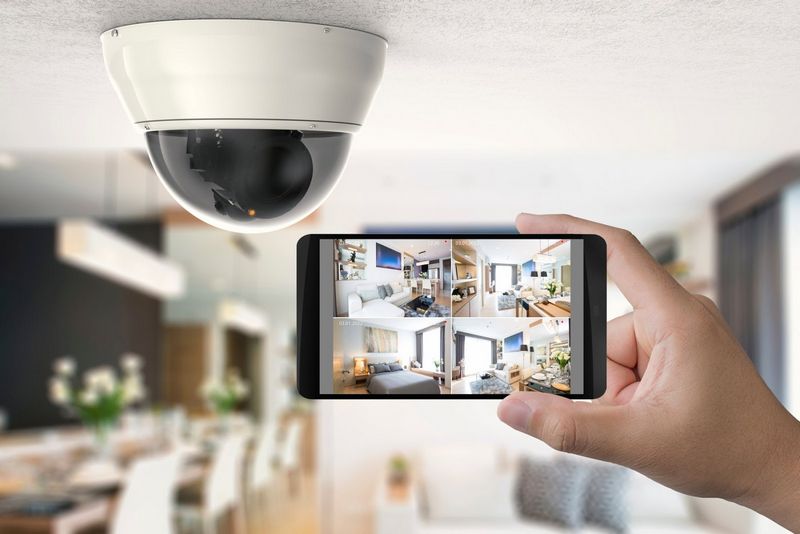
| Energy management |
| Remote monitoring |
| Task automation |
| Predictive maintenance |
| Insurance discounts |
Smart Home Technology and Crime Prevention
In today’s rapidly changing security landscape, smart home technology is revolutionizing the way we protect our homes and prevent crime. With the advent of smart devices and internet connectivity, homeowners now have the ability to monitor and control their home security systems from anywhere in the world.
Smart home technology allows homeowners to integrate various security devices, such as surveillance cameras, motion sensors, and door/window sensors, into a unified system. This interconnected system not only provides a comprehensive view of the home but also enables proactive crime prevention.
One of the key features of smart home technology is its ability to send real-time alerts to homeowners if any suspicious activity is detected. For example, if a motion sensor detects movement in a restricted area, the homeowner can immediately receive an alert on their smartphone. This allows them to quickly assess the situation and take appropriate action, such as contacting the authorities.
In addition to real-time alerts, smart home technology also offers remote monitoring capabilities. Homeowners can access live video feeds from their surveillance cameras, enabling them to keep an eye on their property even when they are not at home. This not only acts as a deterrent to potential criminals but also provides valuable evidence in the event of a break-in.
Furthermore, smart home technology allows homeowners to automate security measures, making it appear as if someone is always at home. This can be achieved through the use of smart lighting systems that can be programmed to turn on and off at specific times, creating the illusion of occupancy. By simulating activity, smart home technology helps to deter burglars and other criminals.
In conclusion, with its advanced features and capabilities, smart home technology is playing a crucial role in crime prevention. By providing real-time alerts, remote monitoring, and automated security measures, it offers homeowners peace of mind and helps to create a safer living environment.
Smart Home Technology and Fire Safety
In today’s increasingly smart home landscape, technology is changing the way we approach home security. With the rise of smart home devices, homeowners now have access to advanced fire safety systems. These systems utilize cutting-edge technology to protect homes and their occupants from the dangers of fire.
Smart home fire safety devices, such as smoke detectors and fire alarms, are equipped with features that go beyond traditional fire safety measures. For example, they can be connected to a homeowner’s smartphone, allowing real-time notifications and alerts in the event of a fire. This means that homeowners can be immediately alerted, even if they are not at home.
Another innovative feature of smart home fire safety systems is their ability to integrate with other smart devices. For example, these systems can activate smart door locks to aid in evacuation efforts or automatically shut off electricity and gas to prevent further damage. These integrations provide homeowners with an added layer of safety and convenience, making it easier to react quickly in the event of a fire.
In addition to real-time notifications and integrations, smart home fire safety devices also offer advanced detection capabilities. For instance, some devices can analyze smoke patterns and distinguish between harmless cooking smoke and a potentially dangerous fire. This reduces the likelihood of false alarms and ensures that homeowners can trust the accuracy of their fire safety systems.
Overall, the emergence of smart home technology has revolutionized home security, including fire safety. With the integration of advanced features and connectivity, these smart devices provide homeowners with peace of mind and a higher level of protection. As technology continues to evolve, the landscape of home security will only become smarter, ensuring the safety of homes and their occupants.
Smart Home Technology and Emergency Response
With the rapid advancement of smart home technology, the security landscape has drastically changed. Homeowners now have access to innovative devices and systems that can help protect their homes and respond to emergencies quickly and efficiently.
Smart home security technology incorporates various devices, such as smart locks, security cameras, and motion sensors, which are interconnected and controlled through a central hub. These devices allow homeowners to monitor their homes remotely and receive real-time alerts in case of any security breaches.
One of the key benefits of smart home security technology is its ability to provide immediate emergency response. In the event of a break-in or any other emergency situation, smart home systems can automatically trigger alarms and notify the homeowner, as well as emergency services if necessary. This quick response time can help mitigate potential damage and ensure the safety of the home and its occupants.
Additionally, some smart home security systems offer advanced features like facial recognition technology and artificial intelligence algorithms. These features can help identify potential threats and distinguish between regular activities and suspicious behavior, further enhancing the overall security of the home.
Moreover, smart home technology can also assist in emergency situations unrelated to security. For example, smart smoke detectors can detect smoke or the presence of fire and automatically alert the homeowner and emergency services. This early detection can be crucial in preventing extensive damage and saving lives.
In conclusion, smart home technology has revolutionized home security by providing homeowners with innovative tools to protect their homes and respond to emergencies effectively. With the ability to remotely monitor and control their home security systems, homeowners have greater peace of mind knowing that they can stay connected and take immediate action in case of any security or emergency concerns.
Privacy and Data Security
The changing landscape of home security technology is not without its concerns when it comes to privacy and data security. As smart home devices become more prevalent in our lives, it is important to consider the potential risks they may introduce.
One of the main concerns with smart home technology is the collection and storage of personal data. Smart devices, such as security cameras and voice assistants, rely on gathering data about users’ activities and behaviors to provide personalized experiences. While this can enhance convenience and security, it also raises questions about who has access to this data and how it is being used.
Homeowners must be aware of the security measures in place to protect their data. Encryption and secure protocols should be implemented to ensure that any data transmitted between devices and the cloud is protected from external threats. Additionally, users should have control over the data that is collected, including the ability to delete it if desired.
- Regular software updates and patches should be provided by device manufacturers to address any vulnerabilities that may be discovered.
- Strong passwords and two-factor authentication should be encouraged to prevent unauthorized access to smart home devices.
- Privacy settings should be clearly defined and easily accessible, allowing users to choose which data is shared and with whom.
As the technology continues to evolve, it is crucial for both homeowners and manufacturers to prioritize privacy and data security. Trust in smart home technology can only be maintained if there are strong safeguards in place to protect user privacy.
Future Trends in Smart Home Security
As technology continues to advance, the way we secure our homes is changing. Smart home security systems are becoming increasingly popular, offering a new level of convenience and peace of mind. Here are some future trends to look out for in smart home security:
- Artificial Intelligence (AI) Integration: AI will play a significant role in the future of smart home security. With AI integration, security systems will be able to learn and adapt to a homeowner’s habits and preferences, making them more efficient and effective in detecting and preventing security breaches.
- Advanced Sensors: Sensors will continue to evolve and become more sophisticated. They will be able to detect not only motion but also changes in temperature, humidity, and even the presence of harmful substances. This will allow homeowners to monitor their homes for potential threats proactively.
- Cloud-based Monitoring: With cloud-based monitoring, homeowners can access their security system remotely, anywhere, and at any time. This allows for real-time monitoring and alerts, giving homeowners peace of mind even when they are away from home.
- Integration with Other Smart Devices: Smart home security systems will become more integrated with other smart devices in the home. For example, security cameras can be connected to smart door locks and lights, allowing for seamless automation and control.
- Enhanced Privacy and Data Security: As data privacy concerns continue to grow, smart home security systems will prioritize the protection of user data. Advanced encryption and security protocols will be implemented to ensure that personal information remains secure.
In conclusion, the future of smart home security is promising. With the integration of AI, advanced sensors, cloud-based monitoring, and enhanced privacy and data security, smart home security systems will continue to revolutionize the way we protect our homes.
Q&A:
What is smart home technology?
Smart home technology refers to the integration of various devices and systems within a home that can be controlled and automated remotely or through a central hub. These devices can include security systems, thermostats, lighting, entertainment systems, and more.
How is smart home technology revolutionizing home security?
Smart home technology is revolutionizing home security by providing homeowners with greater control and access to their security systems. With smart security cameras, for example, homeowners can monitor their homes remotely and receive real-time notifications of any suspicious activity. Additionally, smart locks allow homeowners to lock and unlock their doors using their smartphones, eliminating the need for physical keys.
What are the benefits of smart home security systems?
There are several benefits of smart home security systems. Firstly, they provide enhanced security by allowing homeowners to monitor their homes from anywhere. Secondly, they offer convenience by enabling remote control of various devices, such as locking and unlocking doors or adjusting thermostats. Lastly, smart home security systems can also help save energy and reduce utility bills by optimizing the usage of lighting, heating, and cooling systems.
Are smart home security systems expensive?
The cost of smart home security systems can vary depending on the specific devices and features chosen. While there may be an initial investment required, the long-term benefits and savings provided by these systems can outweigh the costs. Additionally, with advancements in technology and increased competition in the market, the prices of smart home security systems have become more affordable and accessible to a wider range of homeowners.

